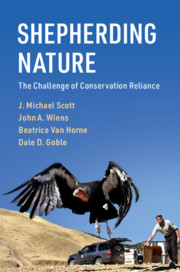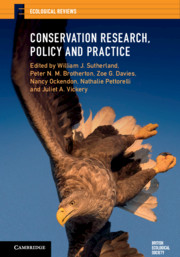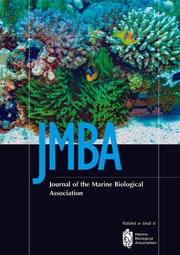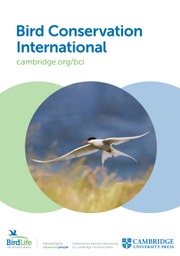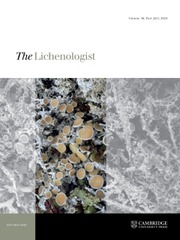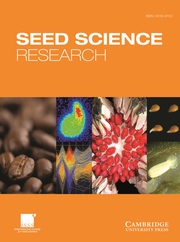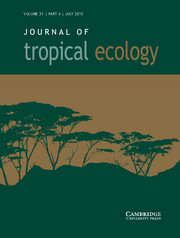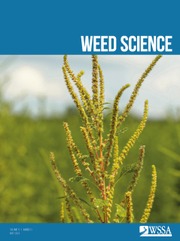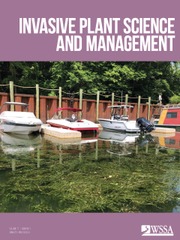Conservation Translocations
Part of Ecology, Biodiversity and Conservation
- Editors:
- Martin J. Gaywood, University of the Highlands and Islands
- John G. Ewen, Zoological Society of London
- Peter M. Hollingsworth, Royal Botanic Garden Edinburgh
- Axel Moehrenschlager, IUCN SSC Conservation Translocation Specialist Group
- Date Published: December 2022
- availability: In stock
- format: Paperback
- isbn: 9781108714570
Paperback
Other available formats:
Hardback, eBook
Looking for an inspection copy?
This title is not currently available on inspection
-
Conservation translocation - the movement of species for conservation benefit - includes reintroducing species into the wild, reinforcing dwindling populations, helping species shift ranges in the face of environmental change, and moving species to enhance ecosystem function. Conservation translocation can lead to clear conservation benefits and can excite and engage a broad spectrum of people. However, these projects are often complex and involve careful consideration and planning of biological and socio-economic issues. This volume draws on the latest research and experience of specialists from around the world to help provide guidance on best practice and to promote thinking over how conservation translocations can continue to be developed. The key concepts cover project planning, biological and social factors influencing the efficacy of translocations, and how to deal with complex decision-making. This book aims to inspire, inform and help practitioners maximise their chances of success, and minimise the risks of failure.
Read more- The first major volume that focuses on all types of conservation translocations, rather than just species reintroductions
- Provides best practice guidance on how to improve the chances of project success and minimise the risk of failure
- Presents a wide range of case studies of animal and plant conservation translocations from around the world that signify a diversity of issues, challenges, and solutions that practitioners experience
Reviews & endorsements
'Tackling big problems requires a diversity of knowledge and perspectives. As such I am so pleased to present this first authoritative text on conservation translocations. Contributors from all around the world not only showcase lessons learned to date but also set the stage for future actions that will help species large and small, restore ecosystems from oceans to land, and yield benefits for humanity that transcend geography and culture.' Razan Al Mubarak, President, International Union for Conservation of Nature
See more reviews'The many chapters provide an excellent review of the existing literature, both formally and informally published, and will be an invaluable guide for future practice.' Oryx - The International Journal of Conservation
'[A] nuanced collection of perspectives, work packages and long-standing experiences from seasoned experts on the complexities of moving species. … The book offers refined perspectives on often confusing concepts of restoration, reinforcement, reintroduction, assisted colonization, introduction, and deplacement.' Ninad Avinash Mungi, Community Ecology
Customer reviews
Not yet reviewed
Be the first to review
Review was not posted due to profanity
×Product details
- Date Published: December 2022
- format: Paperback
- isbn: 9781108714570
- length: 400 pages
- dimensions: 228 x 153 x 25 mm
- weight: 0.88kg
- availability: In stock
Table of Contents
Part I. Conservation Translocations: Getting Started:
1. Moving Species: Reintroductions and other conservation translocations Martin J. Gaywood and Mark Stanley-PriceI
2. Conservation translocations: Planning and the initial appraisal Sarah E. Dalrymple and Joe M. Bellis
Part II. Conservation Translocations: The Key Issues:
3. Conservation translocations and the law Arie Trouwborst, Andy Blackmore, Sally Blyth, Floor Fleurke, Phillipa McCormack and Martin J. Gaywood
4. Decision making in animal conservation translocations: Biological considerations and beyond John G. Ewen, Stefano Canessa, Sarah J. Converse and Kevin A. Parker
5. Animal disease and conservation translocations Anthony W. Sainsbury and Claudia Carraro
6. Animal welfare, animal rights, and conservation translocations: Moving forward in the face of ethical dilemmas Lauren A. Harrington, Natasha Lloyd and Axel Moehrenschlager
7. Conservation translocations for plants Joyce Maschinski and Matthew Albrecht
8. Plant health, biosecurity and conservation translocations Ruth Mitchell, Sarah Green and Peter M. Hollingsworth
9. Genomics and conservation translocations Linda E. Neaves, Rob Ogden and Peter M. Hollingsworth
10. The human dimensions and the public engagement spectrum of conservation translocation Jenny A. Glikman, Beatrice Frank, Camilla Sandström, Samantha Meysohn, Michelle Bogardus, Francine Madden and Alexandra Zimmermann
11. Assisted colonisation and ecological replacement Maria Hällfors and Sarah E. Dalrymple
12. The role of conservation translocations in rewilding and de-extinction Philip J. Seddon
Part III. Conservation Translocations: Looking to the Future:
13. From genes to ecosystems and beyond: Addressing eleven contentious issues to advance the future of conservation translocations Axel Moehrenschlager, Pritpal Soorae and Tammy E. Steeves
Part IV. Case Studies:
14. Reintroduction of the endemic plant Manglietiastrum sinicum (Magnoliaceae) to Yunnan Province, China Weibang Sun, Lei Cai and Peter M. Hollingsworth
15. Applying adaptive management to reintroductions of pyne's ground-plum Astragalus bibullatus Matthew A. Albrecht
16. Five reasons to consider long-term monitoring: case studies from bird reintroductions on Tiritiri Matangi Island Doug P. Armstrong, Elizabeth H. Parlato and John G. Ewen
17. Multiple reintroductions to restore ecological interactions in a defaunated tropical forest Marcelo Lopes Rheingantz, Alexandra dos Santos Pires and Fernando A. S. Fernandez
18. Bringing Jaguars and their prey base back to the iberá wetlands, Argentina Emiliano Donadio, Talía Zamboni and Sebastián Di Martino
19. The return of the Eurasian beaver to Britain: The implications of unplanned releases and the human dimension Roisin Campbell-Palmer, Andrew Bauer, Simon Jones, Ben Ross and Martin J. Gaywood
20. The role of community engagement in conservation translocations: The South Of Scotland Golden Eagle Project (SSGEP) Catherine Barlow
21. The European native oyster and the challenges for conservation translocations: The Scottish experience Cass Bromley and David W. Donnan
22. Slow and steady wins the race: using non-native tortoises to rewild islands off Mauritius Carl G. Jones, Vikash Tatayah, Rosemary Moorhouse-Gann, Christine Griffiths, Nicolas Zuël, and Nik Cole
23. Assisted colonisation as a conservation tool: Tasmanian Devils and Maria Island Carolyn Hogg and Phil Wise
Index.
Sorry, this resource is locked
Please register or sign in to request access. If you are having problems accessing these resources please email [email protected]
Register Sign in» Proceed
You are now leaving the Cambridge University Press website. Your eBook purchase and download will be completed by our partner www.ebooks.com. Please see the permission section of the www.ebooks.com catalogue page for details of the print & copy limits on our eBooks.
Continue ×Are you sure you want to delete your account?
This cannot be undone.
Thank you for your feedback which will help us improve our service.
If you requested a response, we will make sure to get back to you shortly.
×

